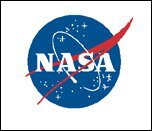In the fall of 1985, Art Kimura thought he was a strong contender to be the nation’s first teacher in space.
After all, the Hawaii state finalist had a background in both science and aeronautics. A biology teacher at a Honolulu high school, he had spent more than a decade in the Air National Guard, after serving 4 1/2 years in the U.S. Air Force.
Today, the genial, barrel-chested Kimura smiles at his naivete.
“The choices they made in Christa [McAuliffe] and Barbara [Morgan] were great choices. Everyone could relate to them,” he says of the high school social studies teacher and the elementary school teacher who were selected as winner and backup, respectively.
Even if he wasn’t selected, Kimura saw his participation as a way to stand up for his state.
“In Hawaii, a lot of people disqualified themselves,” he says, noting that 19 teachers applied from his state, compared with 1,000 from California. “If the line was 10,000 teachers long, I wanted to be in line.”
The Challenger disaster—especially the deaths of McAuliffe and Ellison Onizuka, a shuttle crew member from Hawaii—turned his pride into a sense of mission.

|
“If the Challenger had flown successfully, I wouldn’t be sitting with you right now. There’s no doubt that changed my entire career path,” he says.
In another fateful twist, then-Gov. John Waihee began campaigning to build a Hawaiian facility for launching space satellites. The state’s new office of space industries “borrowed” Kimura from the department of education for seven years to direct a many-faceted space-education program.
“At that time, I’d gone into school-level administrative training. For 12 years that process went on hold,” says Kimura, now 53.
In the interim, he visited every one of Hawaii’s schools, presented 1,500 programs in nine years, conducted hundreds of teacher workshops, and helped organize a series of annual space conferences that involved more than 1,000 teachers.
In 1991 he became the program director of “Future Flight Hawaii,” an ongoing summer program for families and students that culminates in a mission to a lava field to simulate Moon or Mars landings.
Between 1987 and 1992, Kimura and his wife took about 500 students to the U.S. Space Camp center in Huntsville, Ala.—a program that many Hawaii children continue to attend, although the state now has its own space camp, which Kimura helped start. The launch-site development scheme never panned out, however.
Only this year did Kimura make it to the ranks of school administrators. He’s now the vice principal of Kapiolani Elementary School on the island of Hawaii.
He brings to this job a conviction that space-related problems—such as theorizing about future agriculture on Mars or studying the effect of weightlessness on the body—give students reasons to learn academic content.
“You can’t put every child in the space shuttle. You can create the illusion or simulation and allow them to experience it in that context,” Kimura says. “You can create an opportunity to learn.”
